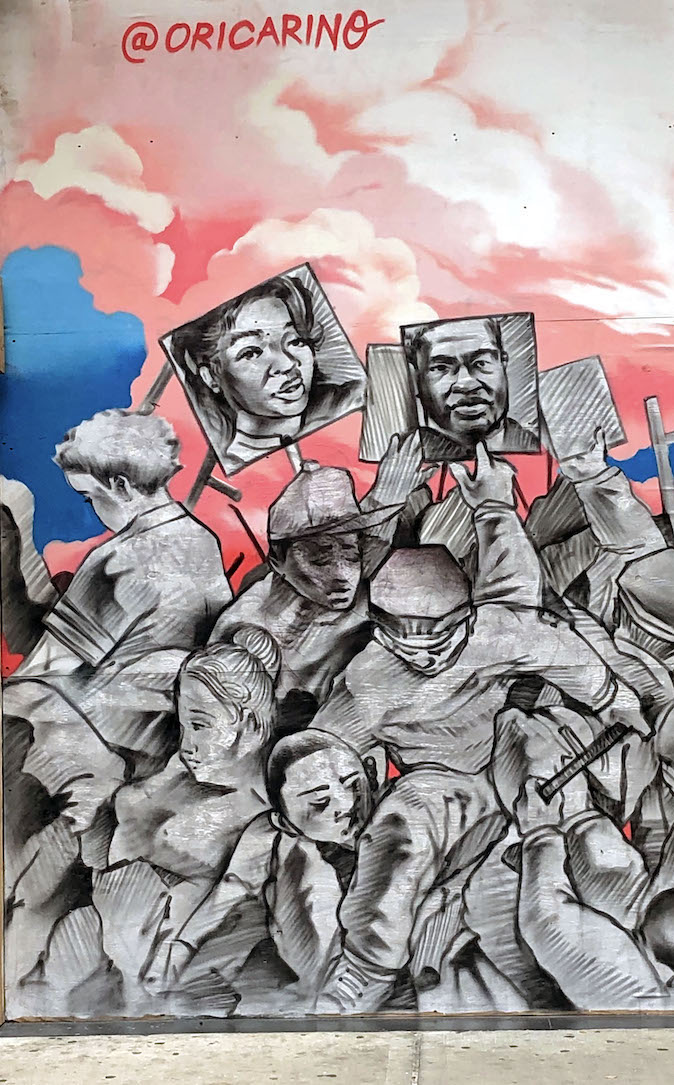
The following guest post was written by Juyoun Han, an attorney at Eisenberg & Baum, LLP
According to the New York Times, Black Lives Matter protests may have been the largest movement in U.S. history, and the most vigilant of these protests remain on the walls, corners, and surfaces of streets that we walk by every day. In cities across the country — Seattle, Salt Lake City, Chicago, New York City — artists banded together to use their creativity as a powerful visual advocacy against racial injustice. World-renowned artist Banksy, for example, created a painting that depicts a candle at a memorial starting a small flame at the corner of a U.S. flag. Banksy expressed his support for the BLM movement in an Instagram post, saying “people of colour are being failed by the system.”
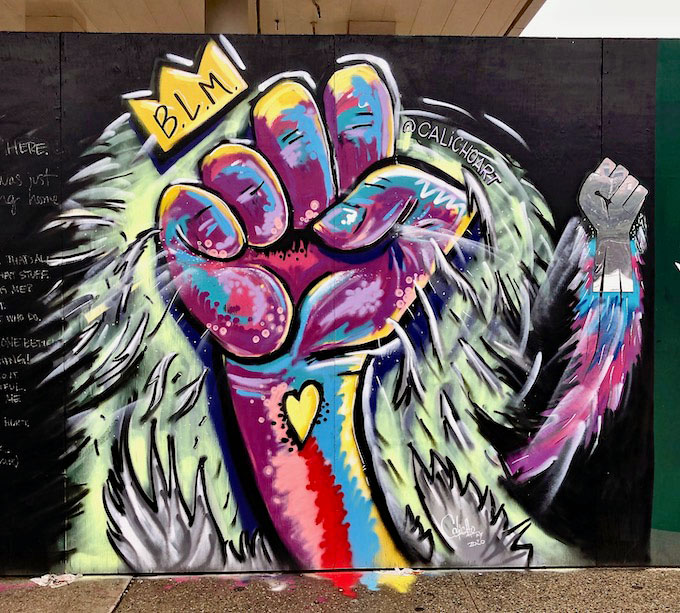
Unfortunately, these murals are short-lived, either because they are immediately tagged or destroyed by dissenters who blithely deny America’s problem of racism. Artists who had transformed boarded-up businesses into powerful BLM art witnessed their art getting thrown out by storeowners. Such defacement of protest art is unfortunately a recurring violation. In 2014, after the fatal shooting of Michael Brown in Ferguson, MO, a renowned Portland-based artist, Ashley Montague, painted a mural of late Brown entitled “Status Quo.” Unfortunately, the mural was tagged and painted over.
Now, here’s the good news: the Visual Artists Rights Act of 1990 (“VARA Law”) may be the key to protecting and preserving these artworks. Under this law, the creators of 5Pointz recently cemented a victory after declination of review by the U.S. Supreme Court, obtaining a $6.75 million award against a luxury condo developer who destroyed what was previously considered to be “the world’s premier graffiti mecca.” The lawsuit sets a powerful precedent that may be relied upon to protect BLM murals.
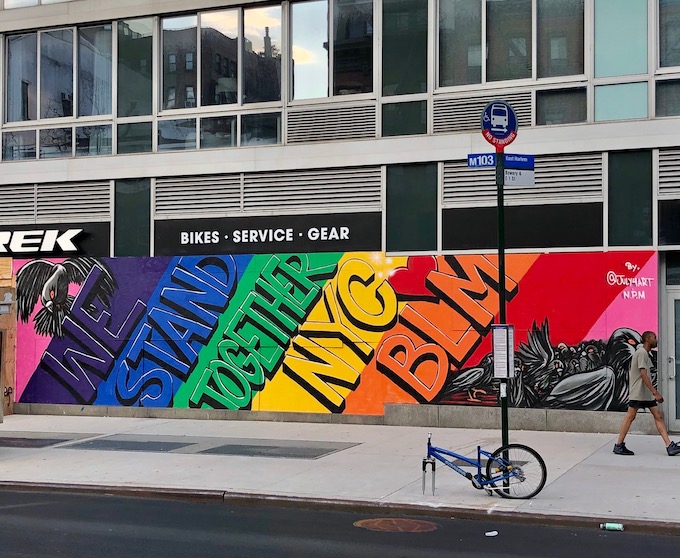
Q&A about VARA Law for street artists:
My artwork was completely destroyed. Can it be protected under VARA?
Yes. VARA law protects artworks from being destroyed, but you will need to prove that the work gained “recognized stature.” This means that your work must have gained recognition by the art community and the public. There are many ways to meet this “recognized stature” standard. For example, you can show that your artwork garnered social media attention and other press coverage, that other members of the art community vouched for your work, or that your work had been featured in movies or videos.
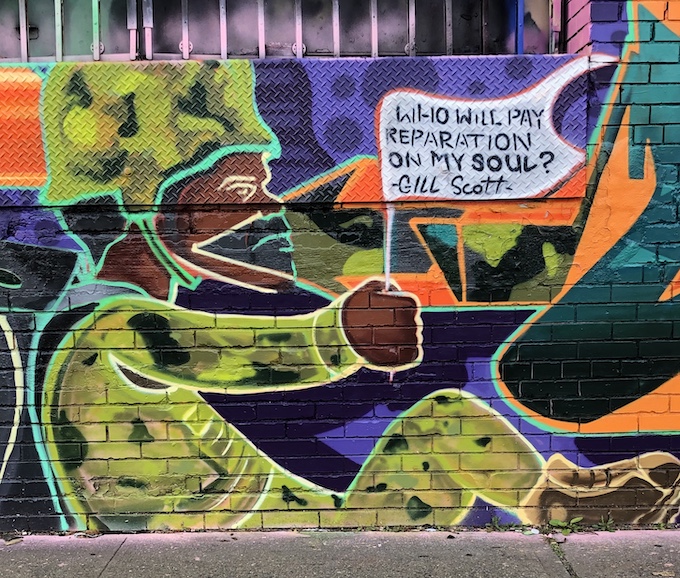
My work is not destroyed, but some people tagged it and now it is a mockery. Does the law protect me?
Yes. VARA protects against modification, distortion, or mutilation of artworks that harms an artist’s reputation. For example, removing and making changes to sculptures made to be installed for a certain space, or partially painting over an original mural and allowing the public to see the distorted art form can harm the original artist’s esteem and reputation in the community. Even an emerging artist can show that the artist’s reputation has been harmed on a case-by-case basis. After all, part of the goal of VARA law is to protect works of lesser known artists as well as artists who have already gained fame
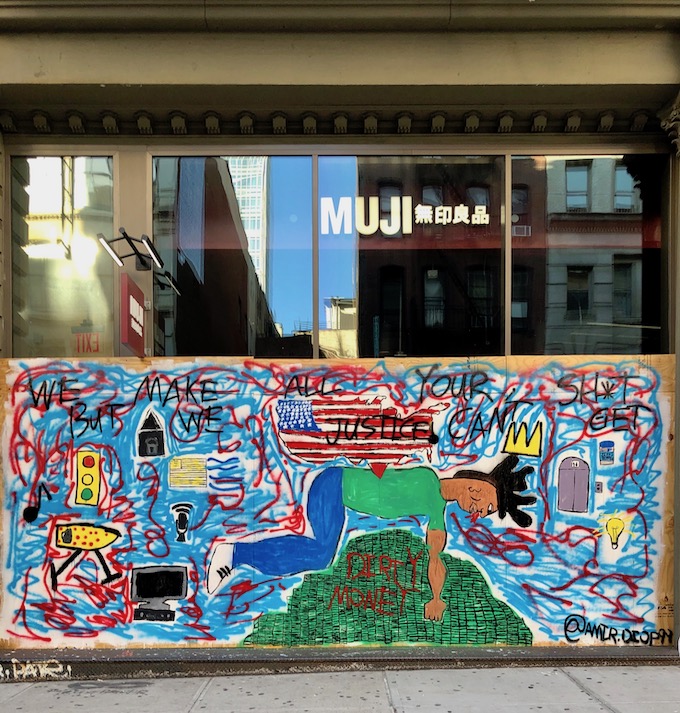
What if multiple artists collaborated on a single piece of artwork?
VARA may protect artwork even if it was created by multiple artists as a collaboration piece; not every artist involved needs to be famous. Even an artwork led by an artist joined by a community of teenage students can be protected under VARA.
If I am hired to install the art, can I still gain protection under VARA?
No. If you were hired to install a piece of art, then the “work-for-hire” exception applies and VARA will not protect your artwork.
What kind of protection would I gain under VARA?
If your artwork has already been destroyed, you can bring a legal action for compensation. If you have knowledge that your work may be destroyed in the future, you can prevent that from happening by requesting a legal injunction. You are also entitled to a 90-day notice before your work is removed.
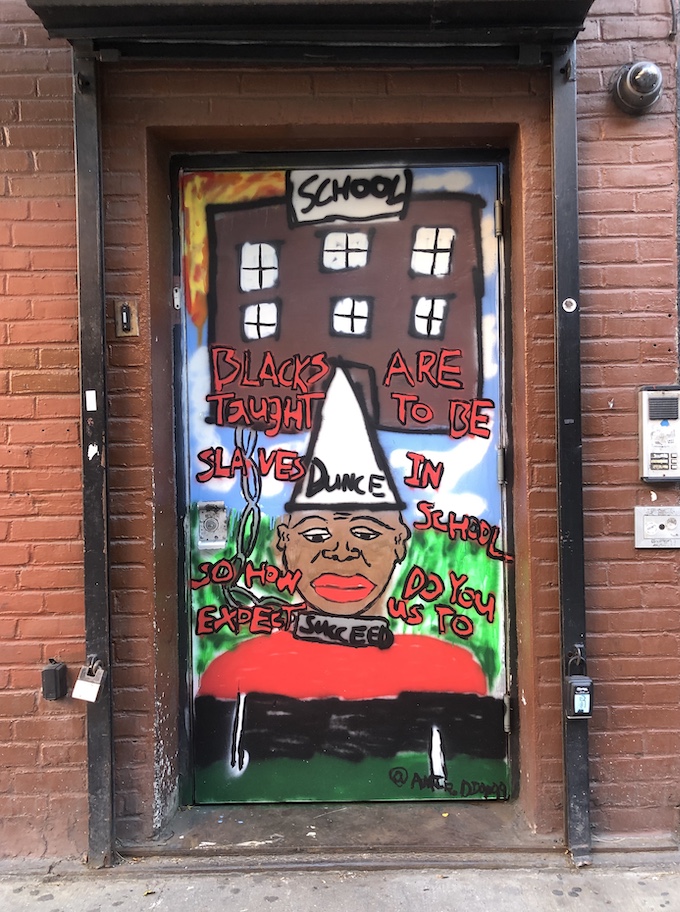
What kinds of murals will VARA NOT protect?
If you signed a document or “waiver” of your VARA rights, then you cannot try to preserve your work. If you created an artwork on a property without permission or authorization from the property owner, this is a grey area—there is at least one legal case that says VARA law will not protect unauthorized artworks. However, if the artwork is removable (for example, on a board or a canvas) from the wall of the building, it might be protected even if not authorized.
If your artwork was not destroyed but modified due to normal wear and tear, or due to weather or climate change, it can be more difficult to ask for legal recovery. Also, the following forms of art are excluded from VARA protection: works made for hire, posters, maps, globes or charts, technical drawings, diagrams, models, applied art, motion pictures, books and other publications, electronic publications, merchandising items or advertising, promotional, descriptive, covering, packaging material or container; nor does VARA cover any work not subject to general copyright protection.
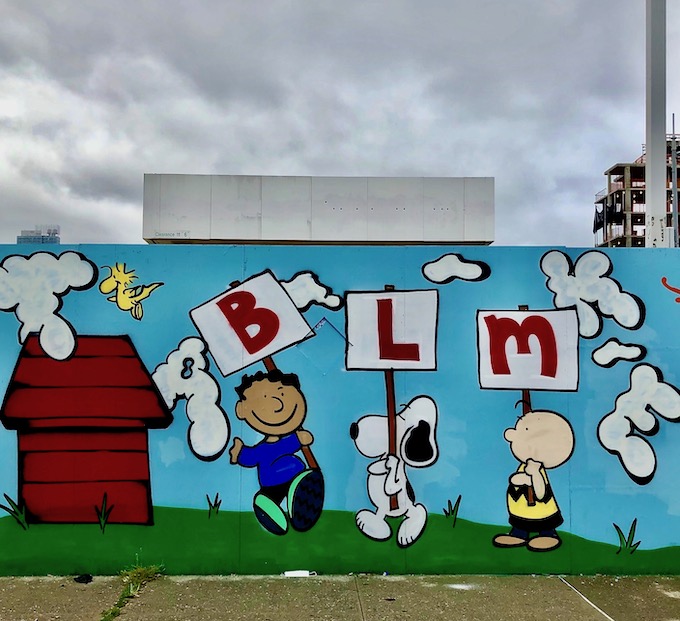
Does it matter which state I live in?
No. VARA law is federal law, so it applies no matter which state you live in. However, there are state laws that are similar to VARA, which may give you additional legal protection.
What can artists do to protect their art?
Authorization – gaining authorization, preferably in writing, from the owner of the mural’s site to create your artwork will be advantageous in a legal action.
Recognition – the more the artist can show recognition (e.g. social media, press coverage, public and art community’s acclaim) the more effective it would be to prevent or recover compensation from those who destroyed the work.
Timely Response – if you are aware of threats to destroy or mutilate your artwork, respond in a timely manner. Contacting lawyers can help prevent the damage, facilitate negotiations, and if necessary, bring legal actions.
About the author: Juyoun Han, is a lawyer at Eisenberg & Baum LLP based in NYC. Juyoun’s practice includes Art Law, Artificial Intelligence Fairness & Data Privacy, and Disability Rights litigation. She was involved in the 5Pointz litigation and thanks her clients who have opened her eyes to
the world of art.
Note: The views expressed on this post are those of the individual author writing in her individual capacities only – not of any employers or affiliates.
Street art protest images featured here were selected and photographed by Lois Stavsky
1 Ori Carino on the Lower East Side
2 Calicho Arevalo in Gowanus
3 july4art on the Bowery
4 Souls NYC in the Bronx, south of West Farms
5 & 6 Amir Diop in Soho and Noho
7 Unidentified artist in Gowanus
{ 0 comments }
